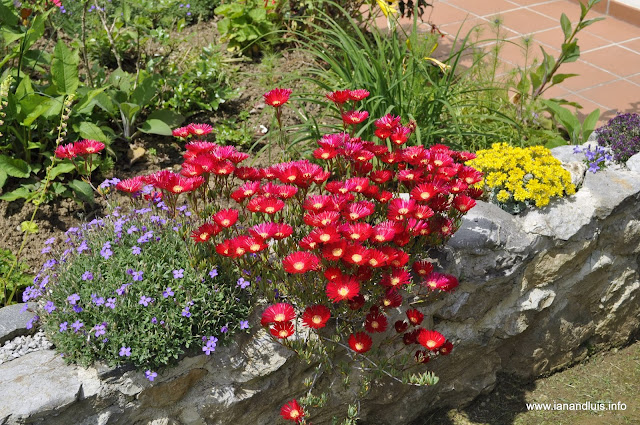The craft of chair rushing has always fascinated me. Some years ago, I could not let the opportunity pass to learn this craft. It all came about after visiting a Saturday craft fair held in Holmfirth when we lived in South Yorkshire.
I eventually got to know Heather Pearce, a stall holder who sold already restored chairs and who demonstrated chair caning and rushing. Heather kindly agreed to teach me how to re-cane and rush a chair. Over the Spring and Summer months, I joined her at her market stall and she kindly taught me these beautiful crafts.
I wanted to learn these crafts as it was something I could do when we eventually bought a home here in Asturias. One of the initial challenges was how to promote myself and to this effect I started writing a blog in Spanish: www.artesanialapasera.com. I also started demonstrations during crafts fairs locally.
I soon started getting some work after handing out business cards during demonstrations and through the blog and local furniture and antique restorers.
Another of the challenges I found was to obtain the rush. In the UK, it was available through various outlets, imported from Holland but in Spain it took some effort to find who would sell it in the small quantities I usually require. It is getting harder to get good quality rush in Spain as those who used to harvest it no longer feel it is financially worth their while and the authorities are reluctant to grant the required permits. I recently found out about a company that may be willing to post to Spain so we will see what the quality is like.
Rushing a chair is a craft that takes its toll on your hands but I always celebrate the beauty of a newly rushed chair and being able to give a second lease of life to the beautiful chairs, stools and benches I have had the opportunity to re-rush over the years.
Good quality antique chairs are fairly uncommon in Spain for a variety of reasons and most of them show sings of neglect, woodworm infestation and very often, structural damage with bad repairs. Having said that, it is still worth restoring them and after the new rush seat is woven they look fantastic with their shabby chic appeal as is the case of these two chairs I recently was asked to re-rush.
When I got the chairs, first of all, I had to treat for woodworm even when there was no signs of it being active - just in case. I also had to dust them and even clean some bird droppings before I considered re-glueing some of the joints.
The decoration was very damaged in parts but its style and structure reminded me of a chair I re-rushed some years ago and that was decorated by one of the Uria Aza brothers, artists from Ribadesella who in the 1950's finished painting the beautiful frescoes in Ribadesella's St Mary Magdalene's church that were started in the 1920's.
I eventually got to know Heather Pearce, a stall holder who sold already restored chairs and who demonstrated chair caning and rushing. Heather kindly agreed to teach me how to re-cane and rush a chair. Over the Spring and Summer months, I joined her at her market stall and she kindly taught me these beautiful crafts.
I wanted to learn these crafts as it was something I could do when we eventually bought a home here in Asturias. One of the initial challenges was how to promote myself and to this effect I started writing a blog in Spanish: www.artesanialapasera.com. I also started demonstrations during crafts fairs locally.
I soon started getting some work after handing out business cards during demonstrations and through the blog and local furniture and antique restorers.
Another of the challenges I found was to obtain the rush. In the UK, it was available through various outlets, imported from Holland but in Spain it took some effort to find who would sell it in the small quantities I usually require. It is getting harder to get good quality rush in Spain as those who used to harvest it no longer feel it is financially worth their while and the authorities are reluctant to grant the required permits. I recently found out about a company that may be willing to post to Spain so we will see what the quality is like.
Rushing a chair is a craft that takes its toll on your hands but I always celebrate the beauty of a newly rushed chair and being able to give a second lease of life to the beautiful chairs, stools and benches I have had the opportunity to re-rush over the years.
Good quality antique chairs are fairly uncommon in Spain for a variety of reasons and most of them show sings of neglect, woodworm infestation and very often, structural damage with bad repairs. Having said that, it is still worth restoring them and after the new rush seat is woven they look fantastic with their shabby chic appeal as is the case of these two chairs I recently was asked to re-rush.
The decoration was very damaged in parts but its style and structure reminded me of a chair I re-rushed some years ago and that was decorated by one of the Uria Aza brothers, artists from Ribadesella who in the 1950's finished painting the beautiful frescoes in Ribadesella's St Mary Magdalene's church that were started in the 1920's.
























































